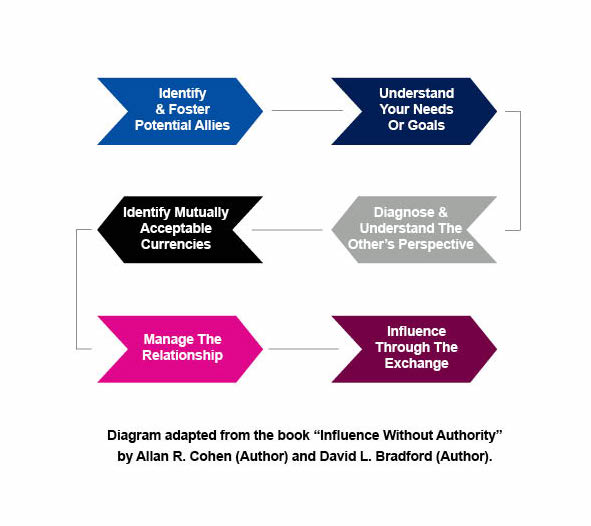Influencing Without Authority: A Valuable Tool for BRMs

While the individuals at the “top” of the organizational chart are regarded as the business leaders with decision-making and governance authority by nature of their position, there is another type of leadership and authority that is important to the Business Relationship Manager (BRM) role: the emergence of the “informal leader.”
Influence vs. Power
Leadership can be defined as “the way in which individuals influence groups or individuals to achieve common goals.” Formal leaders influence through their position as the authority to affect change and achieve results. They’re regarded as legitimate leaders through the organizational chart, have the authority to provide benefits, and are seen as having access to key information that isn’t readily available to non-leaders.
As a result, informal leaders find that they must influence without direct positional or organizational authority to achieve results.
Informal leaders emerge within an organization when their colleagues accept them in a certain role, they are recognized as subject matter experts, or they build relationships that support them as informal leaders. Since the BRM does not typically have a hierarchical reporting relationship with individuals or groups in the business or the service provider organization, it is key to develop the ability to foster influence as an informal leader in order to be successful.
Influence Without Authority: The Three Critical Best Practices
For BRMs, there are three critical best practices that successfully support influencing without authority:
Informal leaders emerge within an organization when their colleagues accept them in a certain role, they are recognized as subject matter experts, or they build relationships that support them as informal leaders.
Build allies and networks. Allies are those individuals in an organization with whom you want to craft a working relationship. Maybe they’re individuals who usually make things happen, or perhaps they have access to vital resources or people turn to them for advice. They could even be the source of roadblocks or obstacles (after all, keep your friends close and your enemies closer).
The key is to build relationships with these individuals before you need to call upon them. Building the network involves creating an alliance or coalition of the willing, in which mutual cooperation benefits all parties.
Be clear about your goals as you navigate and persuade. As you tap into your network of allies for their help on a task or problem, be very clear about what you want to get out of the “ask.” Clarity with respect to the problem and your expectations of the ideal “final state” is key in the give-and-take of a negotiation.
Understand the power of reciprocity. Based on the work of Dr. Robert Cialdini, PhD, author of the national bestseller Influence: The Psychology of Persuasion, reciprocity is “a modification of the “Golden Rule.”” This means that reciprocity is an intuitive obligation we feel to repay others for favors or gifts received for our benefit.
If we flip this concept around, leveraging the power of reciprocity means building up a “savings account” of reciprocal currency.

This can look like going out of your way to lend others a hand voluntarily, providing useful information, or supporting an ally’s efforts on a project. When you eventually need help, you can then call on your savings account to influence their actions to support you.
Influencing without authority takes time and effort, along with a very specialized skill set that BRMs develop over time with experience and presence within an organization. That said, you will find that as you build and nurture your ally network and develop your reciprocity standing within the network, getting things done will become easier—truly a valuable tool for any BRM.
